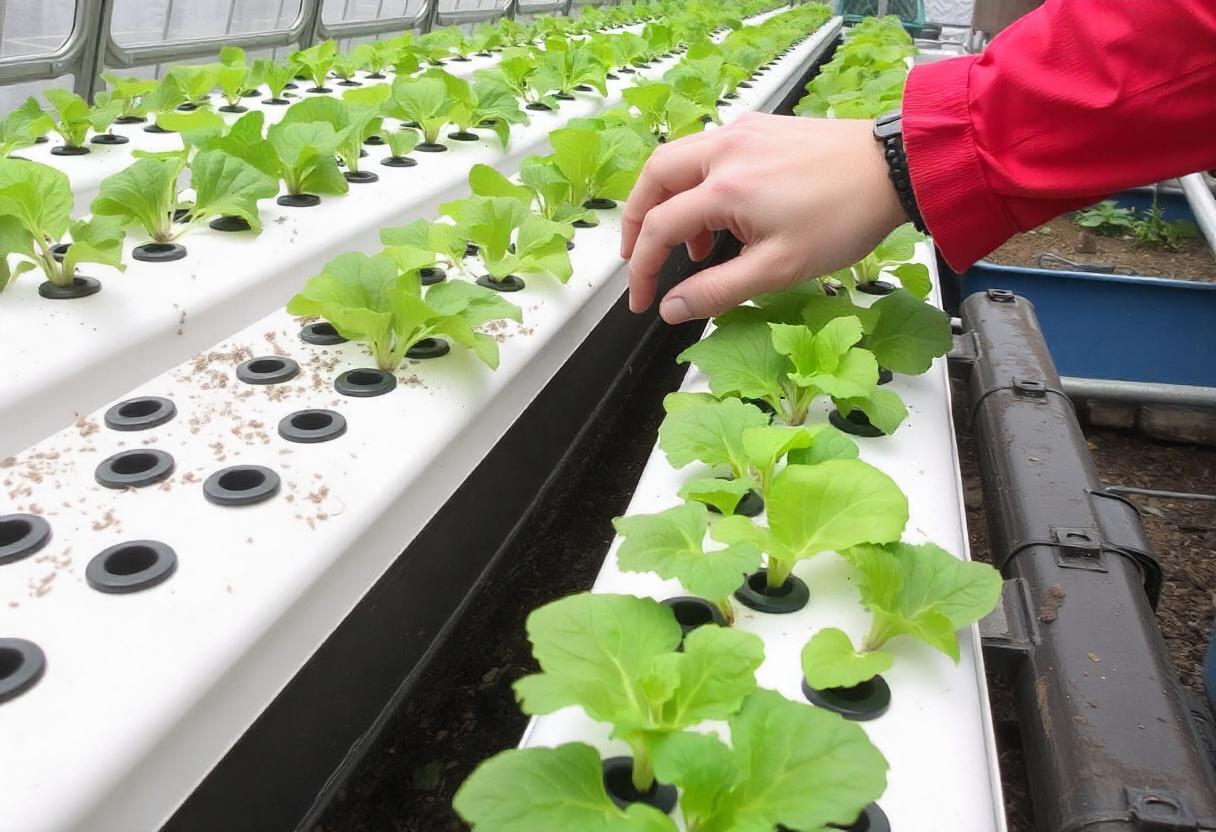
Hydroponics and soilless agriculture are innovative farming methods that offer efficient, sustainable, and eco-friendly alternatives to traditional soil-based farming. These methods enable plants to grow without soil, utilizing nutrient-rich solutions or alternative growing media, and are becoming increasingly popular in urban and industrial farming settings.
What is Hydroponics?
Hydroponics is a type of soilless farming where plants are grown using mineral nutrient solutions in water instead of soil. The plants receive all the essential nutrients they need directly through the water, which can be continuously circulated or kept in a static system. This method allows for precise control over the growing environment, enabling higher yields and faster growth rates.
Different Types of Hydroponic Systems
There are several types of hydroponic systems, each offering unique benefits based on the needs of the crops and the resources available.
- Nutrient Film Technique (NFT): In this system, a thin film of nutrient-rich water flows continuously over the roots of plants, allowing them to absorb nutrients directly from the solution.
- Deep Water Culture (DWC): Plants are suspended in a nutrient-rich water solution with their roots fully submerged. Oxygen is provided using an air pump to prevent root rot.
- Drip Systems: Nutrient solutions are dripped onto the base of the plants through a network of tubes, allowing the roots to absorb nutrients.
- Aeroponics: Roots are suspended in the air and periodically misted with nutrient-rich water. This system maximizes oxygen availability to the roots, promoting faster growth.
- Wicking Systems: A passive hydroponic method where a wick draws nutrient solutions from a reservoir to the plant roots, relying on capillary action.
Benefits of Hydroponics
Hydroponics offers numerous advantages over traditional farming practices, especially in urban or resource-limited environments.
- Water Efficiency: Hydroponics uses up to 90% less water than traditional farming since water is recirculated in closed-loop systems.
- Space Utilization: Vertical farming techniques allow crops to be stacked, optimizing space and increasing yield per square meter.
- No Need for Soil: This method is ideal for regions where arable land is scarce or where soil quality is poor.
- Faster Growth: Controlled environments provide optimal conditions for growth, allowing plants to mature faster.
- Reduced Pesticide Use: Since hydroponic systems are often located indoors or in greenhouses, the need for chemical pesticides is minimized.
Challenges of Hydroponic Farming
While hydroponics offers many benefits, there are also challenges associated with this method.
- Initial Setup Costs: Hydroponic systems can be expensive to set up, requiring specialized equipment and materials.
- Technical Expertise: Maintaining a hydroponic system requires knowledge of nutrient balances, water quality, and equipment operation.
- Energy Consumption: Indoor hydroponic farms may rely on artificial lighting, which increases energy usage.
- Risk of Disease: If one plant becomes infected, the disease can spread quickly through the shared water supply.
Soilless Agriculture: Beyond Hydroponics
Soilless agriculture encompasses more than just hydroponics. Other methods of soilless farming include aquaponics and aeroponics, which integrate different techniques for growing plants without soil.
- Aquaponics: This system combines hydroponics with aquaculture (fish farming). The waste produced by fish is converted into nutrients for plants, while the plants help filter the water for the fish. It’s a symbiotic system that promotes sustainability.
- Aeroponics: As mentioned earlier, this method involves suspending plant roots in the air and misting them with a nutrient solution. It uses less water than traditional hydroponics and provides plants with high oxygen levels.
Applications of Soilless Agriculture
Soilless farming methods are increasingly being adopted in both urban and rural areas due to their efficiency and scalability.
- Urban Agriculture: With increasing urbanization and limited space for traditional farming, hydroponics and other soilless methods are being used in rooftop gardens, indoor farms, and greenhouses.
- Commercial Greenhouses: Soilless agriculture is ideal for commercial greenhouse production, allowing for year-round farming of fruits, vegetables, and herbs.
- Arid Regions: In regions where water is scarce or the soil is unsuitable for farming, soilless agriculture offers a solution for growing crops in controlled environments.
Environmental Impact of Hydroponics and Soilless Agriculture
Soilless farming methods have a lower environmental footprint compared to traditional farming in many ways. These methods reduce water consumption, eliminate the need for large expanses of farmland, and can be integrated into urban spaces. Additionally, since they often rely on controlled environments, the use of chemical pesticides and herbicides is significantly reduced, contributing to a cleaner and more sustainable agricultural process.